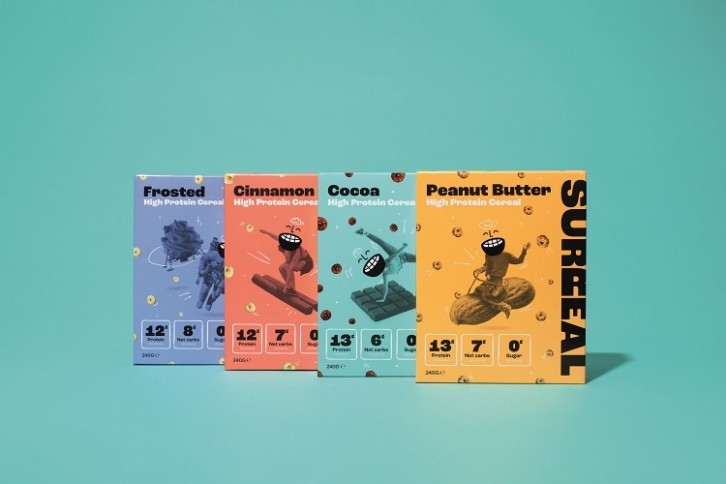Eating too much fat, salt and sugar is not good news for one’s health, with overconsumption linked to increased non-communicable disease risk. In response, stakeholders – including manufacturers and policymakers – are taking action.
For food and beverage makers, retaining consumers is an obvious priority. How can they best remove fat, salt and sugar from traditionally fatty, salty and sweet products, and continue to satisfy tastebuds?
Why are food and drink manufacturers reformulating?
In the UK, new restrictions on foods high in fat, salt or sugar (HFSS) are coming into play.
The first wave of legislation saw HFSS food and drinks banned from prominent sales locations in-store and online, with bans on multibuy offers (including ‘buy one get one free’) coming into play October 2025. TV advertising of HFSS food and drinks will also be subjected to a 9pm watershed at that time.
To help ensure product sales aren’t hindered, food and drink manufacturers have been reformulating en masse.
But regulation is not the only factor driving reformulation efforts. Manufacturers have also been reformulating on their own accord, according to Lauren Woodley, group nutrition lead at Nomad Foods – a frozen food major selling into 13 European countries.
“There are a mixture of mandatory and voluntary measures, and these vary by region and by country. However, I would say that a lot of reformulation at the moment is being pushed by the food industry.”
That is not to say that voluntary measures alone always remove fat, salt and sugar from product formulations, and as demonstrated in the UK, regulators can seek to create a more even playing field. Whatever the motivation, manufacturers are putting these nutrients in the firing line. Which are the most challenging to remove from which formulations?
Cutting sugar from traditionally sweet foods
For Nomad’s Woodley, sugar and salt are the two most problematic nutrients in Nomad’s portfolio – which includes brands Birds Eye, Goodfella’s, Aunt Bessie’s, and others. They each have their own challenges, she told the audience at FoodNavigator’s recent Positive Nutrition Digital Summit.
While sugar offers the obvious sweet taste to foods, it also plays functional roles. “That provides a whole new area of challenge, especially with foodstuffs where the basic structure is down to sugar.”
For Nomad, this poses a particular problem in its dessert portfolio, largely centred around its Aunt Bessie’s brand in the UK. The approach is two-fold: to reduce sugar content while increasing fibre. The result is that Nomad has reduced sugar content across its seven best-selling desserts between 16-22% and increased fibre by up to 50%.
The brand’s biggest selling product, the Jam Roly Poly, underwent 16% sugar reduction and 52% fibre increase. Looking at the ingredients list, fibre comes from wheat flour and sugar from fruit jam and sugar.
“This was a really significant R&D project, which had lots of technical challenges because we found that textures were different, the way in which products ran through the factory differed, and obviously the flavour was impacted as well.”
Another family favourite, Aunt Bessie’s apple crumble product, has also undergone renovation and is now HFSS compliant. Not that Nomad is marketing the product in that way. “We’d never tell consumers, because we’re fairly sure a lot of consumers wouldn’t buy it if they though it was a bit too healthy and wouldn’t deliver on the apple crumble experience. We stealthily do changes to these products.”

Also in the UK, challenger cereal brand Surreal is also focused on sugar content. The brand launched in 2021 with the aim of offering adults zero sugar, high protein cereals, but with the flavour of their favourite childhood cereals (think cinnamon, frosted, peanut butter and cocoa).
A lot of Surreal’s customers are diabetic, which means traditional cereals are completely off limits. While that also makes them much more susceptible to sugar substitutes, suggested co-founder Jac Chetland at the Positive Nutrition event, it doesn’t mean Surreal isn’t laser-focused on finding the perfect sugar substitute for its products.
The company launched with no-calorie sweetener sucralose in its cereal formulations, but feedback suggested the sweetener’s reputation was not as strong as others on the market. In the end, Surreal decided to swap out sucralose for something perceived to be more natural: “We found that stevia [sourced from the leaves of the stevia plant] was more widely accepted as a sugar substitute,” revealed Chetland.
Why salt and fat reduction challenges manufacturers
Whereas sugar was off the table from the get-go, limiting fat and salt content was more challenging for Surreal.
On the fat side of things, the start-up was determined to use coconut oil as the oil carrier within its products. But when it turned out the coconut oil available was low grade, deodorised and bleached, Surreal changed tack and opted for seed oils instead.

In the end, it was the salt that posed the biggest problem, revealed Chetland. Being high-protein, Surreal leans on plant-based ingredients including soy and pea protein. “Naturally, those ingredients are generally higher in salt than some other protein alternatives,” he explained, citing dairy protein as an obvious low-salt substitute. As a plant-based brand, however, dairy was not an option.
There were other ingredients Surreal would have liked to use, the CEO revealed, but which would have pushed its products over the HFSS regulation limits. Overall it was a ‘big balancing act’, and one that may continue depending on consumer demands.
“We work with our consumers to understand which ingredients they’re enjoying, which ones they don’t, and then continue our development programme…Our product development journey has been one that, to the consumer, looks like we’re on version one, but we’re more likely on version 24 at this stage.”
Salt is also a challenging nutrient for Nomad, which as Europe’s largest frozen food company sells a lot of frozen fish. The process of freezing fish can increase its salt levels, which doesn’t help matters.
“The challenge with salt is getting a responsible level that still delivers on taste – meaning you won’t lose consumers to saltier competitor products – but which also means consumers won’t feel the need to salt their foods at the table or add so many condiments that the overall salt in the meal is actually higher than if we hadn’t done the salt reduction in the first place,” explained Nomad’s Woodley.
“With salt, it’s very much about balancing responsibility with the taste profile that people demand, and don’t move away from if they don’t get.”
The ‘balancing act’ of reformulation: from ingredients to consumer testing
That reformulation is a ‘balancing act’ is agreed by ingredients supplier Ingredion. For the larger established brands reformulating existing products – rather than innovating new ones – it’s about making changes without negatively impacting consumer acceptance.
Manufacturers need to ask themselves: what’s the number one issue we want to address?, explained Ingredion’s Hazel-Fromm Tatosian, senior director, global applications. And once that’s decided, they can balance other aspects of the formulation around that solution.

There are practical steps manufacturers can take to help ensure consumers accept newly reformulated products. Dr Laura Wilkinson, associate professor in psychology at Swansea University believes conducting repeat consumer testing in crucial.
“It can be very easy to get consumers in once and taste the product, but the challenge is biology. We sense nutrients, we sense calories from a biological perspective.”
Suggesting that consumer liking of reduced calorie products can decrease over time, the researcher stressed consumer testing must not be capped at ‘one session’ only, ‘it’s over the longer term’.
Missed any of FoodNavigator’s Positive Nutrition Digital Summit 2024? Don’t worry, you can still access all of our sessions and handouts, which will be available on-demand for the next 90 days. Click here to register for free.
